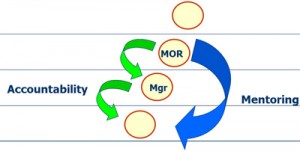“You seem a bit frustrated,” I said.
“I am, I am,” Drew replied. “I think I do a pretty good job in my role as a supervisor. We have a complicated process with long lead items and seasonal demand. During season, we build to order. Off season, we build to stock. We have certain constraints in our process that slow us down and sometimes things stack up when we overproduce some of our sub-assemblies. All in all, I keep things together pretty well.”
“Then, why the frustration?”
“If I could spend the time analyzing the way the work flows through, look at some things that could be done at the same time, understand where the bottlenecks are, I think we could get more through the system.”
“So, why don’t you do that?”
Drew thought for a minute. “Every time I start flow-charting things out, I have to stop and take care of something gone wrong, something we are out of, a team member who didn’t show up for work. It’s always something.”
“What happens when something goes wrong?”
“I get yelled at. My boss tells me to stop thinking so hard and get back to work. The time I spend working on the system just increases my workload beyond what I can get done in a day,” Drew complained. “I am constantly reminded that my primary function is to make sure that orders ship. I just can’t convince my boss that if the company is to move forward, we need to spend time looking at the sequence of steps to make things run smoother.”
“If you keep getting dragged back into day to day problem solving, fighting the fires of the moment, what is the solution? Who else on your team could buffer some of those problems?”
“Nobody. I am the go-to guy. There isn’t anyone else, and there is only one of me.”
“So, the problem isn’t your boss, it’s you,” I said.
“What do you mean?”
“You will never be able to work on larger problems until your team becomes competent at the smaller problems. You can never be promoted to a higher level role until you find someone to take responsibilities in your current role.”
